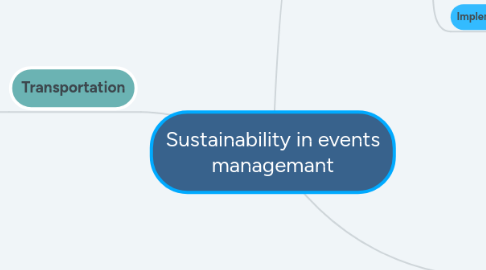
1. Transportation
1.1. Overview
1.1.1. Mass transport is fossil fuel reliant
1.1.1.1. global warming
1.1.1.1.1. pollution and consequential health problems.
1.1.2. a necessary part of the current model of modern living and economic growth
1.1.2.1. ultimate goal : minimum or even zero impact on the environment
1.1.2.1.1. A truly sustainable transport system
1.2. Freight
1.2.1. Sustainable road transport
1.2.1.1. Transport research
1.2.1.1.1. Emissions control is being researched and regulated by government
1.2.1.1.2. Freighting industries + government and industry associations
1.2.1.1.3. Truck manufacturers are working at a fast pace
1.2.1.1.4. CO2 emissions - top of the list
1.2.1.2. Local Government Intervention
1.2.1.2.1. Implementing transport sustainability directives which impact on vehicle movement, development approvals and public transport systems
1.2.1.2.2. Event organizers will need to entwine transport restrictions, levies or other activities into their traffic and freighting plans.
1.2.1.3. Efficiency and Planning
1.2.1.3.1. A commitment to change and the implementation of systems including load sharing and minimizing ‘less than loadfull’ (LTL) freighting
1.2.1.4. Biofuels
1.2.1.4.1. cropped oil plants
1.2.1.4.2. waste products from agriculture
1.2.1.4.3. Tallow from abattoirs
1.2.1.4.4. a company with waste oil as a by-product of their operations and a fleet of trucks as well
1.2.2. On-site 4WDs, Plant and Machinery
1.2.3. Reducing Transport Miles
1.2.3.1. Require the sourcing of all products and hiring of contractors locally
1.2.3.2. Consider where these products originated
1.2.4. Sponsor and Partner Opportunities
1.2.4.1. Contractor Compliance
1.2.4.2. Unnecessary Transport
1.2.4.2.1. Planning of course: Schedule one trip off site a day
1.3. Crew and Participant Transport
1.3.1. Performers
1.3.1.1. Appeal to their conscience and ask them to consider how they get to your event.
1.3.2. Volunteer Stewards
1.3.2.1. : Encourage them to promote lift share
1.3.3. Crew
1.3.3.1. work with major contractors who bring in large numbers of crew to devise the best transport solutions for their people, including buses if appropriate
1.3.4. Participants
1.3.4.1. market stallholders, caterers, bars and their staff, speakers, workshop leaders and competitors in sporting competitions.
1.3.5. Measuring Performance
1.3.5.1. Numbers of crew, participants, performers, and volunteers.
1.3.5.2. Point of origin for each participant (or averages).
1.3.5.3. Mode of transport.
1.3.5.4. Car occupancy rates.
1.4. Audience Transport
1.4.1. Traffic Management and Congestion:
1.4.1.1. Licensing, traffic and police authorities are interested in congestion, parking, road closures, ect.
1.4.1.2. Team members should consider the environmental impact of transporting your audience and of coming up with sustainable audience transport solutions and programmes.
1.4.1.3. Public transport will be part of your overall traffic plan.
1.4.1.4. For planning permission approval, many councils are now giving preference to – or in fact insisting on – developments that encourage travel by walking, cycling and public transport.
1.4.2. Influencing Audience Transport
1.4.2.1. Charging car parking fee
1.4.2.2. Pre-purchased car passes and limiting the number of cars that can park up
1.4.2.3. Bundling coach or train travel tickets with event tickets
1.4.2.4. Meeting audiences’ requirements for timing, accessibility, reliability and, most importantly, having a successfully functioning system so as not to discourage its use in future years.
1.4.3. Types of transport
1.4.3.1. Car Travel
1.4.3.2. Car Pooling and Lift Share
1.4.3.3. Coach and Train Travel
1.4.3.4. Air Travel
1.4.3.5. Cycling
1.5. Assess Mode of Transport
1.5.1. Train Travel
1.5.1.1. Number of passengers.
1.5.1.2. Average distance per passenger.
1.5.1.3. Tonnes CO2.
1.5.1.4. Percentage of total audience travelling by train.
1.5.2. Shuttle Buses
1.5.2.1. split your reporting between shuttle buses that are connecting with train stations and those that are ‘locals’ or from other departure points
1.5.3. Coach Travel
1.5.3.1. Number of coaches.
1.5.3.2. Total distance travelled.
1.5.3.3. Tonnes CO2.
1.5.3.4. Occupancy rate.
1.5.3.5. Number of passengers.
1.5.3.6. Percentage of total audience travelling by coach.
1.5.4. Flights
1.5.4.1. Number of people flying.
1.5.4.2. Percentage of total audience travelling by plane.
1.5.4.3. Point of origin and return.
1.5.4.4. CO2 emissions.
1.5.5. Car Travel
1.5.5.1. Number of cars.
1.5.5.2. Occupancy rate
1.5.5.3. Average distance travelled.
1.5.5.4. Tonnes CO2.
1.5.5.5. Percentage of total audience travelling by car.
1.5.5.6. Liftshare/carshare uptake.
1.5.6. Freight
1.5.6.1. Total distance transported.
1.5.6.2. Tonnage transported (goods).
1.5.6.3. CO2 emissions.
2. Introduction
2.1. Definition
2.1.1. Sustainable event management is the process of integrating environmental and social responsibility issues into event planning
2.2. Benefits
2.2.1. Environmental benefits
2.2.2. Positioning and competitive advantages
2.2.3. Public relations
2.2.4. Financial savings
2.3. Implementation
2.3.1. Green positioning
2.3.1.1. Green branding and theme
2.3.1.2. Avoid greenwashing
2.3.2. Stakeholder engagement
2.3.2.1. Attract sponsors to your event that can add value and support to sustainability projects.
2.3.2.2. Choose inspiring performers, speakers, artists and other participants who can champion green goals.
2.3.2.3. Encourage all traders to be as sustainable as possible
2.3.3. Audience communication
2.3.3.1. Pre-event communication
2.3.3.1.1. Audience purchasing
2.3.3.1.2. Media releases
2.3.3.1.3. Promotional materials
2.3.3.2. At-event messaging
2.3.3.2.1. Building waste stations and eco booths
3. Energy
3.1. Definition
3.1.1. Minimize the impact of energy use at event
3.1.2. Reduce power consumption and look for alternative ways to provide power to your event
3.2. Energy and Emission checklist
3.2.1. Venue for indoor event
3.2.1.1. choosing a certified sustainable venue: Sustainable building codes
3.2.1.2. Reducing demand for power: Efficiency products (cfls, LEDs,..), Switch-off campaign
3.2.1.3. Renewable energy supply: Use renewable energy, micro-power generation
3.2.2. Outdoor event
3.2.2.1. Reduce demand for power
3.2.2.2. Energy efficiency equipment
3.2.2.3. Install permanent cabling
3.2.2.4. Natural gas
3.2.3. Using sustainable biofuels
3.2.3.1. Waste vegetable oil biodiesel
3.2.3.2. Pure plant oil
3.2.3.3. DIY energy
3.2.3.4. Algae oil
3.2.4. Using alternatives/ renewable energy
3.2.4.1. Zero emission energy
3.2.4.2. Solar power
3.2.4.3. Microgeneration
3.2.4.4. Wind power
3.2.4.5. Pedal power
3.2.5. Lighting
3.2.5.1. Turn the light off
3.2.5.2. Energy efficient bulbs: cfls, LEDs
3.2.6. Vocs and Waste emissions
3.2.6.1. Paint
3.2.6.2. Sewage
3.2.6.3. Cleaning supplies
3.2.6.4. Printer’s ink
